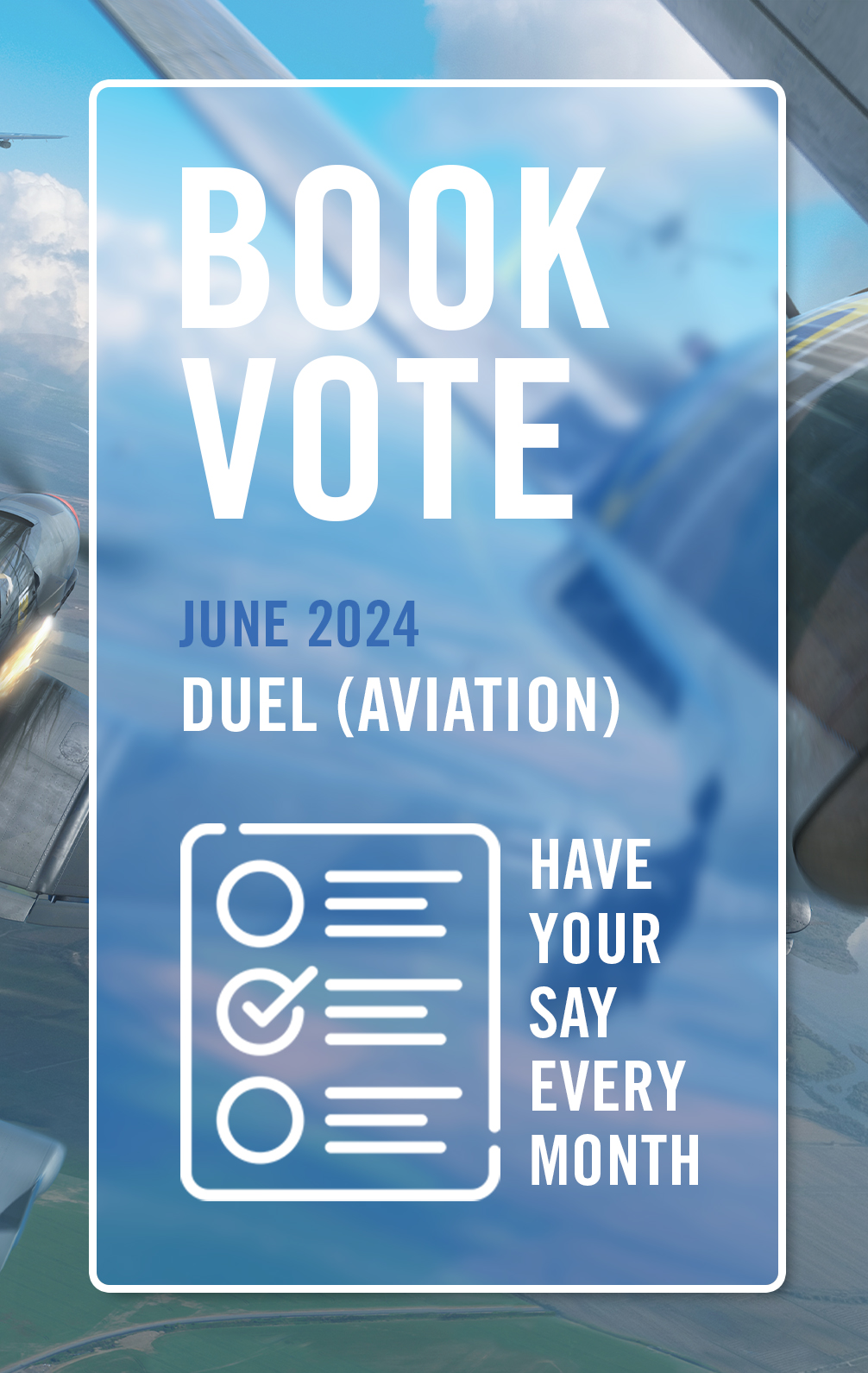
This month's book vote sees five Duel (Aviation) titles battling for your support. Read the full descriptions and have your say by visiting the Book Vote page. Plus, check out the results of last month's Elite vote.
Spitfire V vs Fw 190 (Northwest Europe 1941–43)
F4F Wildcat vs A6M2-N ‘Rufe’ (Solomon Islands 1942–43)
Typhoon vs German Flak Defences (Western Europe 1943–45)
G3M ‘Nell’ and G4M ‘Betty’ vs Allied Warships (1941–43)
Ju 88 Fighters vs Allied Maritime Aircraft (Northern Europe 1942–44)
Spitfire V vs Fw 190 (Northwest Europe 1941–43)
The introduction of the Fw 190 to Luftwaffe service in late 1941 caused problems for RAF fighter pilots who went into battle with the Spitfire VA/B, a fighter which proved to be no match for the new ‘Butcher Bird’ that could quite literally run rings around Spitfire. Nevertheless, the RAF Fighter Command pilots bravely took on their new foe, managing to score numerous successes up until the introduction of the Spitfire IX, a fighter better able to deal with the Fw 190, in July 1942.
F4F Wildcat vs A6M2-N ‘Rufe’ (Solomon Islands 1942–43)
During the fiercely fought aerial battles that took place overhead the Solomon Islands throughout 1942–43, there were a number of unique confrontations between floatplanes and land-based fighters. Aside from deploying their ubiquitous Zero-sen, the Imperial Japanese Naval Air Force also fielded the A6M2-N ‘Rufe’ floatplane – termed the ‘Zero on floats’ by American pilots – whose skilled pilots attacked with tenacity. These encounters occurred more frequently than has previously been presented in Western histories.
Typhoon vs German Flak Defences (Western Europe 1943–45)
Designed as a replacement for the company’s Hawker Hurricane, the Hawker Typhoon was envisioned as the fastest fighter that the RAF had ever fielded. Delays to its engine and testing, along with structural issues, saw the aircraft nearly cancelled. Yet, the Typhoon’s low-level performance saved it and would see it evolve into the RAF’s premier ground attack aircraft in Western Europe. This brought it into the waiting sights of the Luftwaffe’s Flakwaffe. As the Allies drove German armies back, the Flakwaffe’s strength grew in intensity and with it, the Typhoon’s legend and losses.
G3M ‘Nell’ and G4M ‘Betty’ vs Allied Warships (1941–43)
In the 1930s the Imperial Japanese Naval Air Force (IJNAF) developed the rikko bomber, a long-range twin-engined aircraft intended to project naval power over water. These aircraft were designed to attack enemy warships, especially battleships and cruisers, with highly effective Japanese torpedoes. In an attempt to overcome limited warship numbers, the IJNAF fought numerous battles against Allied warships. This book examines the role played the G3M ‘Nell’ and G4M ‘Betty’ rikko units in Japan’s fight against Allied (and specifically US Navy) dominance of the Pacific, and the measures taken by warships to protect themselves.
Ju 88 Fighters vs Allied Maritime Aircraft (Northern Europe 1942–44)
With the war in the Atlantic starting to intensify following the US entry into the conflict, from early summer 1942 the Luftwaffe began using Ju 88C-6 fighters to intercept and shoot down RAF anti-submarine aircraft off France’s western coast. As a result, the RAF began sending Beaufighter and Mosquito long-range fighters to counter the threat. The Luftwaffe duly increased the size of the Ju 88C formations in response, resulting in some spectacular combats being fought out over the Bay of Biscay and the Atlantic.
Last month, we asked what you would like to see published in our Elite series. Thank you to everyone who voted and provided feedback. Without further ado, here are the results:
American Civil War Siege Warfare 1861-65 - 34%
Imperial Japan's Air Forces 1937-45 - 32%
The US Air Force at War 1947-91 - 7%
The Luftwaffe 1935-45 - 16%
The Royal Air Force at War 1945-91 - 10%

Comments
You must be logged in to comment on this post. Click here to log in.
Submit your comment